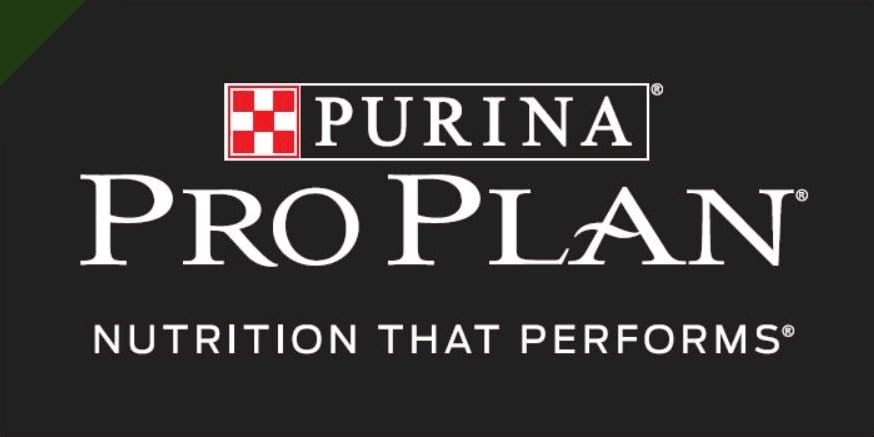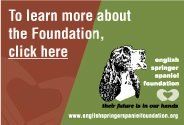by Kathy Sonier
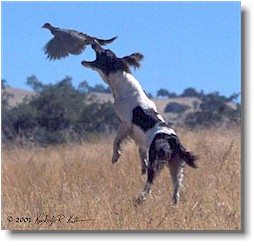 Field trials are a competitive sport involving the team of dog and handler. First held in England around the turn of the 20th century, a trial gives a handler and his or her dog the opportunity to compete in the field with their peers. The purpose of a spaniel field trial is to demonstrate the performance of a properly trained spaniel in the field. The performance should not differ from that in any ordinary day's shooting, except that in the trials a dog should do his work in a more nearly perfect way. The Blue Book, (The Conduct and Judging of Spaniel Field Trials) adds that the following qualities are to be emphasized: retrieving promptly to hand, hunting and game finding, working within gun range, control, steadiness to wing and shot (the dog should "hup," or sit and hold its position, until released by the handler), and responsiveness.
Field trials are a competitive sport involving the team of dog and handler. First held in England around the turn of the 20th century, a trial gives a handler and his or her dog the opportunity to compete in the field with their peers. The purpose of a spaniel field trial is to demonstrate the performance of a properly trained spaniel in the field. The performance should not differ from that in any ordinary day's shooting, except that in the trials a dog should do his work in a more nearly perfect way. The Blue Book, (The Conduct and Judging of Spaniel Field Trials) adds that the following qualities are to be emphasized: retrieving promptly to hand, hunting and game finding, working within gun range, control, steadiness to wing and shot (the dog should "hup," or sit and hold its position, until released by the handler), and responsiveness.
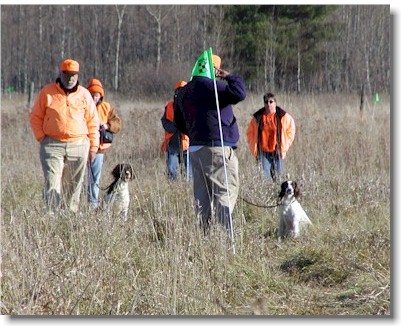
Since the beginning of this sport in the United States in the early 1920's trial operations have remained basically the same. An all-age stake (Open or Amateur) at a local field trial generally consists of three land series and may, at the hosting club's discretion, include a water series. Trials are run using planted game birds, usually pheasants but occasionally chukars. In the first two series, two handler/dog teams are judged concurrently by running in braces, one team running on each side of the shared center line of parallel courses with one judge presiding over each course. Each dog is responsible for finding all birds on his/her section of their course, and generally receives two to three bird contacts per series unless the team commits an error resulting in the judge immediately excusing them from further consideration. The dog must honor the flushes on the opposite course by hupping when it either sees a bird fly up or when it hears the gun, and wait for instructions from its handler.
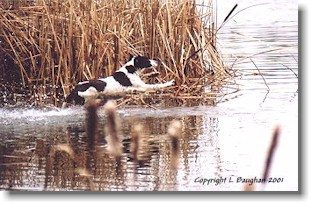
A dog may be excused or not called back to a subsequent series for the following reasons: breaking, failing to honor another dog's retrieve, failing a retrieve, passing a bird, poaching (finding a bird on the other dog's course), pointing, or hardmouth. In addition, an entry may not be called back if the judges feel they could not place that dog, for example, for lack of control or lack of bird finding ability. Remember this is a competition; so the judges do not need to keep a dog under judgment if they know they will not place it.
First Series: In the first series, the dogs run braced under the next available judge until all entrants have had their turn. After completion of the series, the judges provide their callbacks, a list of the dogs that they have judged and found worthy to continue in the second series for their co-judge's consideration. The field set up looks like this:

Second Series: In the second series all dogs still under judgment are brought back to the field and run under the opposite judge and on the opposite course, again in a brace situation. The overall field set up is the same as the first series.
Third Series: Following the completion of the second series, the judges confer and select their top dogs to bring back for review in the third series. The remaining dogs now work individually rather than braced, and both judges observe the dog simultaneously. Following the completion of the third series the judges then discuss overall performances and determine the placements for the trial.

The judges may award a First, Second, Third and Fourth Place in each stake. The Open and Amateur stakes may be run on separate days, or in alternate series. Alternated series look like this: First series of the Open, First Series of the Amateur, Second Series of the Open and so on until completion.
Dogs (or bitches) who obtain enough points (earned through placements in various trials) will be given a title of either Field Champion (FC) for points earned in the Open Stake, or Amateur Field Champion (AFC) for points earned in the Amateur Stake. Each category requires the dog to have two wins and a water test, or a win plus 10 points (2nd place - 3pts, 3rd place - 2 pts, 4th place - 1 pt) and a water test to earn the respective title.

Each year all dogs that have placed in the Open Stake during that year qualify to compete in the National Open Field Trial, usually held in late November or early December. Dogs that placed in the Amateur Stake qualify for the National Amateur Field Trial. A National trial consists of five land series (four series are braced) and one water series. The dogs winning these trials become National Field Champions (NFC) and National Amateur Field Champions (NAFC) respectively, as well as automatically earning their FC or AFC if they do not already have that title. An amateur handler may compete (and place, if they are so fortunate) in both Nationals in a given year.
Puppy stakes are frequently only one series. Dogs/bitches between the ages of six months and two years may compete. Entries run unbraced, and usually on pigeons. Puppies are judged using the same criteria as all-age competitors, including the requirement that they be steady. Puppy stake placements do not count toward championship titles. Puppies may also be entered in an all-age stake at the same trial.
Field trials are run seasonally in the spring and fall, when the cover is conducive to effective planting of the birds. Trials range in size from a minimum of 10 entries to as many as 70 entries in each all-age stake. Only English Springer spaniels may enter and compete in American field trials; other spaniel breeds are not eligible, but may have their own competitions. [Editor's note: For a complete list of clubs go to AKC LICENSED FIELD TRIAL AND HUNTING TEST CLUBS
If you watch a trial, you will see dogs working in tandem with their handler. It is truly beautiful to see when they are in sync. Great dog work is the end result of excellent breeding, a great deal of careful training, and the luck of the circumstances. If you have the opportunity to watch a trial, bring your blaze orange and join the gallery. If you have any questions, ask!!! We all love our dogs and our sport and would love the opportunity to share the "bug". Happy Trialing!!!
Recommended resources:
The AKC Rules for Spaniel Field Trials as found on the AKC website
Spaniels for Sport by Talbot Radcliffe, 1969, The Harmsworth Press, reissued in 1988 by The Boydell Press
Hup! Training Flushing Spaniels the American Way by James B. Spencer, 1992, Howell Book House/Macmillan Publishing Company
The New and Complete English Springer Spaniel by Julia Gasow and Edd K. Roggenkamp III, 1994, 4th Edition, Howell Book House/Macmillan Publishing Company
Above photos by Kathy Sonier, Cathy Lewis, Loretta Baughan and Kim Kuhlman.


